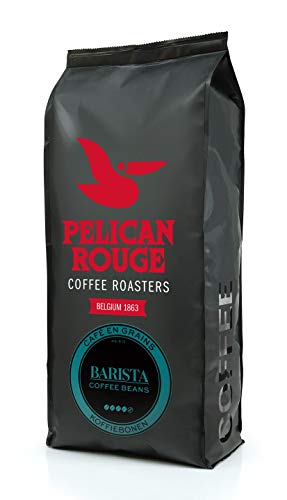Coffee Bean Types: Arabica, Robusta, Liberica, and Excelsa
If you're a lover of coffee you're likely to know that different beans have different flavor profiles. Learn more about four of the most popular varieties: Arabica, Robusta, Liberica, and Excelsa.
Excelsa beans, which are a variety of Liberica that is grown only in Southeast Asia. They have a tangier, more tart flavor and are frequently used in blends of beans to give them added depth.
Arabica
Arabica is the world's most popular coffee and accounts for 75% of the global coffee bean production. coffee beans online are more mild and sweeter than Robusta. They also come in different flavors. The aroma and taste of coffee are affected by the conditions in which it is grown and the processing methods used.
The word "coffee" is derived from the Arabic word that means the berry. Coffee beans are actually seeds which grow inside bright red berries. It is believed that ancient Ethiopian shepherds found that their goats were stimulated by eating berries. The cultivation of coffee grew rapidly all over the world.
Coffee beans can be grown at high altitudes and flourish in cold temperatures and plenty of rain. This is why Arabica coffee is considered to be the most delicious type of coffee.
Many specialty coffee shops and roasters insist on finding their arabica beans in a sustainable manner by focusing on fair wages for farmers and sustainable cultivation practices. These companies often blend arabica beans to create unique coffees that are suitable for many different brewing methods. Blending can control the taste, aroma, body and acidity of coffee. It is generally used to create a consistent and balanced taste that appeals to a broad market.
Robusta
Robusta beans are the second most coveted type of coffee bean in the world. They contain more caffeine per bean and are more protected against diseases and pests. They also have higher levels of chlorogenic acids that are antioxidants that naturally occur. These acids can cause oxidation during the brewing process, and can result in undesirable flavors.
The plant is more robust than the arabica and may grow in less favorable conditions. It is able to withstand higher temperatures and thrives in direct sun. It produces more coffee per plant, and it grows faster than arabica. This makes it a more economically viable crop to cultivate.

While it may sound counterintuitive it's true that arabica and Robusta beans are often blended to create coffee blends. If you notice names like Uganda or Kenya on a coffee bag it's possible that there is also some robusta.
Although some roasters exclusively use arabica beans, most do mix the two varieties to reduce costs and preserve quality. To preserve the flavor integrity you should select the best quality beans from a trusted source. This can be accomplished by purchasing your beans directly from a farmer.
Liberica
Liberica beans have a shape like a football, which makes them different from other coffee beans. They have a distinctive aroma that is floral and fruity with smokey undertones. They are often added to other bean varieties to add the fuller, more robust flavor.
Liberica coffee beans are grown in West Africa and Malaysia (Borneo) as well as in Southeast Asia. They can grow in low altitudes and can withstand humid, hot climates. They are also more resistant to diseases than Arabica or Robusta.
These qualities make them ideal for growing at home. Online, you can buy seeds from numerous sources. However, it's recommended to purchase the beans from local producers in order to guarantee quality. The best growing conditions for Liberica coffee plants are fertile deep volcanic soils that have moderately acidic pH as well as adequate annual rainfall.
Excelsa is a different kind of coffee bean. It was initially classified as a distinct species, but has now been reclassified as a Liberica variant. These coffee beans are ovals that grow on 20-30-foot coffee plants that are situated at medium altitudes. Their distinctive taste is tart and sour, which makes them a popular choice for blends that are house-made. They have a more subtle scent and a lower caffeine levels than Arabica or Robusta but they do possess a distinct depth of flavor.
Excelsa
Although they're the fourth most sought-after type of coffee beans Excelsa beans aren't quite as readily available as Arabica or Robusta. They were actually regarded as a different coffee plant species until 2006, when they were reclassified as a synonym for Coffea Liberica var. dewevrei. They are grown in Southeast Asia today and account for 7% of the global production of coffee. The coffee beans are distinctive with a teardrop shape and have an intriguing dark flavor. They're frequently used in blends to add body and a delicious, tart, ripened fruit taste.
Arabica beans are the most well-known, and are renowned for having a a sweeter taste. They thrive in tropical and warm climates and at high altitudes. They also have a bit of acidity. If properly brewed and roasted, they can have notes like chocolate, nuts or even fruit.
Robusta is a close second to Arabica and makes up around 40% of the world's coffee. Robusta beans are smaller and more round, but have twice the amount of caffeine as Arabica. They are also more bitter than the other two varieties and have an earthy and woody taste.
After you've learned about the four most popular varieties, it's now time to choose your favorite brew. If you prefer a delicate and smooth flavor go for an arabica bean or a blend comprised of robusta beans and arabica beans.
